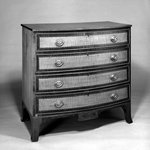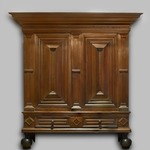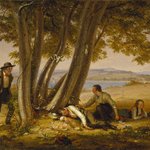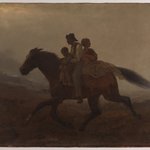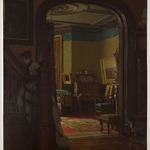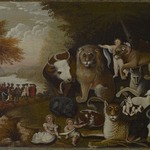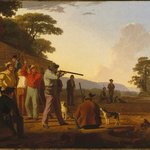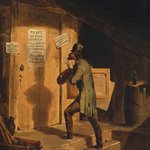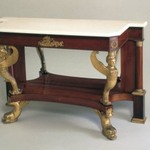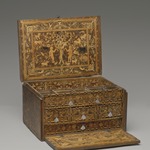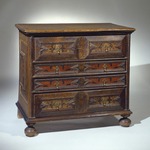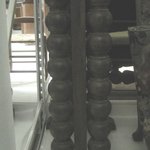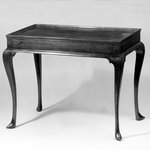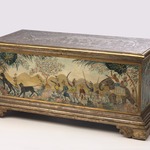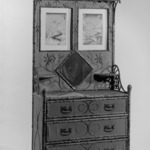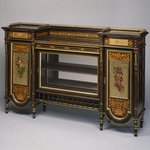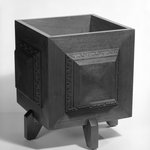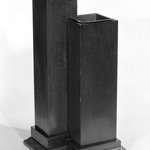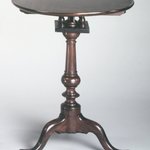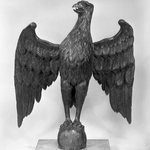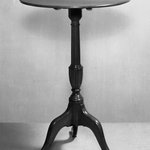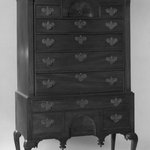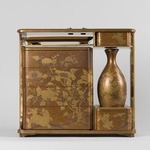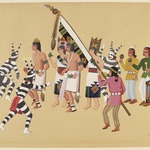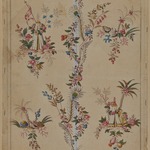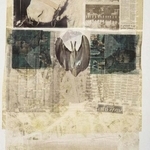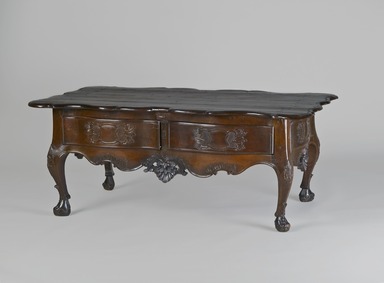

Low Estrado Table, second half 18th century. Mahogany, 20 1/2 x 50 x 28 1/2 in. (52.1 x 127 x 72.4 cm). Brooklyn Museum, Frank L. Babbott Fund, Frank Sherman Benson Fund, Carll H. de Silver Fund, A. Augustus Healy Fund, Caroline A.L. Pratt Fund, Charles Stewart Smith Memorial Fund, and Ella C. Woodward Memorial Fund, 48.206.10. Creative Commons-BY (Photo: Brooklyn Museum, 48.206.10_PS4.jpg)

Low Estrado Table, second half 18th century. Mahogany, 20 1/2 x 50 x 28 1/2 in. (52.1 x 127 x 72.4 cm). Brooklyn Museum, Frank L. Babbott Fund, Frank Sherman Benson Fund, Carll H. de Silver Fund, A. Augustus Healy Fund, Caroline A.L. Pratt Fund, Charles Stewart Smith Memorial Fund, and Ella C. Woodward Memorial Fund, 48.206.10. Creative Commons-BY (Photo: Brooklyn Museum, 48.206.10_bw.jpg)
Low Estrado Table
Decorative Arts and Design
Made thousands of miles apart, these two sets of paired objects reveal both similarities and differences between British American and Spanish American luxury goods. Both William Allen and Don José María Gómez de Cervantes y Altamirano de Velasco are depicted in relatively simple standing half-length portraits that belie the wealth and prominence of the two sitters. Allen was the great-grandson of one of Virginia Colony’s most prestigious settlers. Don José María was the descendant of two old, distinguished Creole (American-born Spaniard) families in New Spain, in what would become Mexico.
The two tables share a common design source—The Gentleman and Cabinet Maker’s Director (1754), by the English cabinetmaker Thomas Chippendale. The volume contains illustrations of domestic furniture in the popular Rococo style, whose curvilinear silhouettes derive from the court style of Louis XV of France.
The low height of the table on the right reflects the influence of Islamic culture, which permeated Spain during the Middle Ages and was brought to the New World by Spanish colonists. At home in Spanish America, the hostess entertained her female guests in the cuadra de estrado, or women’s sitting room, seated on cushions on the floor around a low table. In contrast, British Americans would have sat on side chairs around a taller tea table such as this tray-top version.

